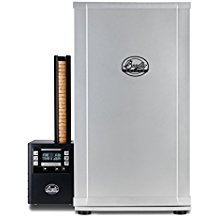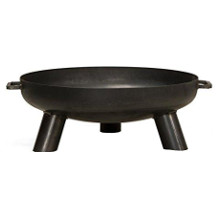Gas barbecue purchasing advice: how to choose the right product
- What you need to know
- Gas barbecues are quickly ready to use, don’t produce ash, and barely emit any smoke.
- In addition to the classic version as a barbecue trolley, gas barbecues are also available in a modern kettle shape and as a mobile tabletop version.
- In order to enjoy your gas barbecue for as long as possible, you should opt for a robust and weather-resistant housing and grate.
- Additional equipment such as a side burner, a back burner, and a rotating spit expand the range of functions, making the gas barbecue a real all-rounder.
Ready to use in no time
Whether in the park, in the garden or on the balcony — barbecuing is one of the most popular ways of preparing food. A barbecue dinner with family and friends combines relaxation with fun and is a great opportunity to display creative barbecue skills. But for the barbecue to be a success, you first need the right barbecue. While some professional cooks swear by classic charcoal grills with their typical smoky aroma, others are convinced by high-tech electric grills. Gas barbecues, however, offer an uncomplicated alternative that is quickly ready to use. Unlike charcoal grills and electric grills, they score points with an easily adjustable temperature, less smoke or odor development, and additional equipment ranging from several burners to separate cooking zones.
How a gas barbecues works
Although gas barbecues are available in a wide range of variations, from simple tabletop barbecues to luxurious barbecue trolleys, the basic principle is the same for all models. A standard gas barbecue has one burner, a heat distribution system, a grill grate, and usually a lid. While inexpensive gas barbecues are equipped with a single central burner, high-quality models have side burners that prevent shooting flames from dripping liquids. Models with several burners achieve particularly even temperatures over the entire grate and thus also a better grilling result.
Unlike a charcoal or electric barbecue, gas barbecues heat with gas, usually propane or butane, which is contained in a bottle or gas container. The container is connected to the burner with the help of a hose system. Getting the grill going only requires a single ignition spark; the flame is then maintained by the gas flowing in. The gas burner under the grill grate heats it without burning fat. In addition, the burner ensures that the hot air is well distributed so that the food is optimally cooked.
Depending on the model, heat is distributed via a pipe system, lava or ceramic stones, or heated metal plates. Gas grills with a pipe system have numerous small holes from which gas flows to supply the burners. The lava stones are also heated by the flames, but because they store the heat well, they still give off heat even after the flame has gone out. When fat and juices from the grilled food drip onto the stones, no harmful fumes are produced as with charcoal grills. To prevent this, some modern gas barbecues catch the dripping liquid in a tray. This is filled with water before use so that the fat cools down in it without sticking to the material. Large-area grills, on the other hand, use a different method: they heat up a metal plate. Since the food is separated from the actual flame, the dripping fat doesn’t interfere.
Users place the food on the grill or warming rack. The lid above the grill retains the heat generated and enables even cooking from all sides. If you grill with the lid closed, you can check the temperature inside the cooking chamber with a thermometer and adjust the heat level as needed with the gas flow regulator.
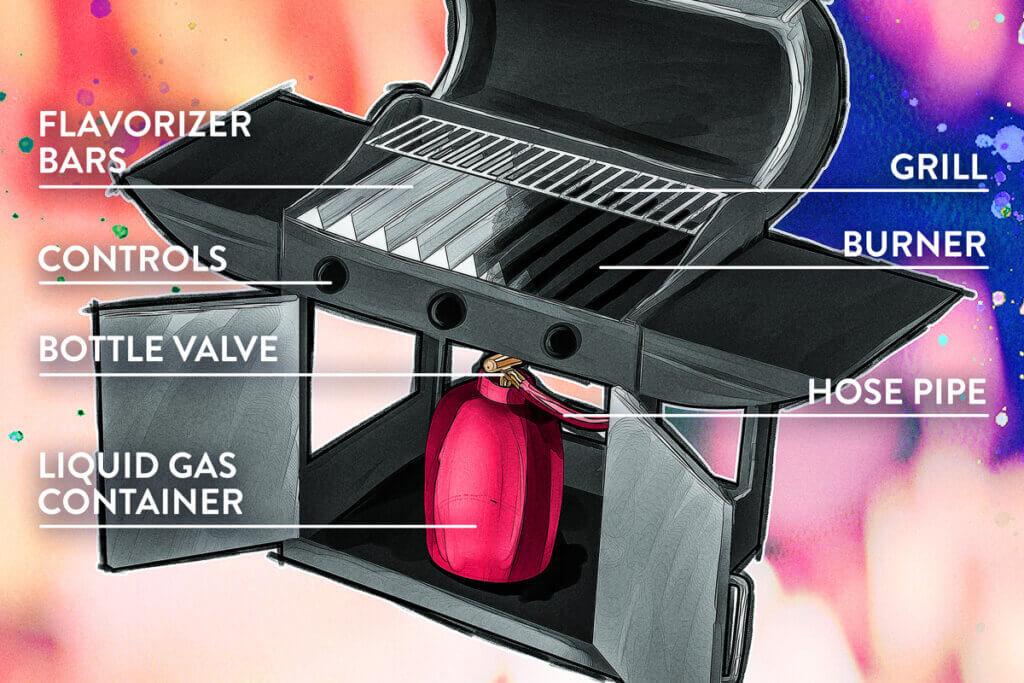
Advantages over other barbecue types
Many people take barbecuing very seriously. Their almost religious zeal even extends to the type of grill one should use. When it comes to the question of the best mode of operation, i.e. electric, charcoal, or gas, opinions differ. While traditional barbecuers swear by the original feeling and aroma of charcoal barbecues, fans of the electric barbecue can still grill inside if the weather is bad.
The main disadvantage of gas barbecues is their usually hefty price. Depending on the model, charcoal barbecues cost between $10 and $250, whereas the prices for gas barbecues start at $50 and go up to $600. Although gas barbecues are much more expensive to buy, the operating costs are lower. The gas is ultimately cheaper than the running costs for charcoal and electric models.
The easy-to-use gas barbecues offer many advantages over charcoal and electric versions. Unlike charcoal grills, they are ready for use immediately: gas grillers simply ignite their burner and put sausage, steak, or veggies on the hot grate within a few minutes, whereas charcoal grills need at least half an hour to reach the desired temperature. By the way, the same applies to switching off the grill: as soon as users turn off the gas supply, the grill (with the exception of lava grills) cools down within half an hour. With a charcoal grill, on the other hand, users have to wait for the charcoal to completely burn out.
Rustic aroma with gas grills
If you don’t want to do without the typical wood and smoke aroma, simply use different types of wood. When moistened or wrapped in aluminum foil, small wood chips or rough woodchunks create a similar smoky aroma to charcoal grills when the lid is closed.
Operating a gas barbecue is not only easier, but also safer compared to coal barbecues. Electric ignition works at the touch of a button and a safety valve cuts off the gas supply as soon as the flame goes out. The risk of a flash fire even if used incorrectly is also much lower than with charcoal grills. The heat on gas barbecues can be controlled via a stepless regulator. Due to the even distribution of heat, the roasting is also more even. Since the gas flames are adjustable, the temperature can be easily adapted to your purposes.
A great advantage for all patio and balcony lovers is the low level of smoke produced by gas barbecues. Unlike charcoal barbecues, there is no need to extinguish the fire with water or to let the embers burn out for a long time. There is also no fat dripping that would swirl up ash. This makes cooking much healthier and cleaning easier, as neither ash nor soot need to be removed.
Advantages
- Quickly ready for use
- Adjustable temperature
- Even heat distribution
- Reduced smoke
- Low operating costs
- Healthier barbecue
- Safe to ignite
- Easy to clean
Disadvantages
- Higher acquisition costs
- Typical barbecue aroma only through wood chips
Types of gas barbecue
Depending on the available space and grilling requirements, a distinction is made between three different gas barbecue types:
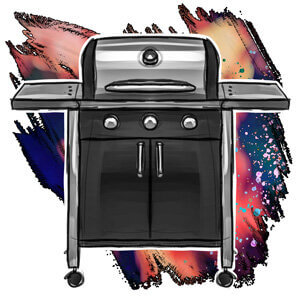
Barbecue trolley
Barbecues with trolleys, also called barbecue stations and portable barbecues, are mainly found in gardens. Thanks to their two or four large, stable wheels and their handles, they can be moved easily on uneven terrain or lawns. The barbecue trolley can be found both with and without casing and usually offers sufficient space for the gas bottle as well as various barbecue accessories. Users can place the food and tongs on the side shelves. If they are not in use, they can usually be folded away or replaced by a side burner. For even more order, some grilling stations also offer cutting boards, drink compartments, and other holding devices. They are significantly wider than kettle or table grills and thus require more space.
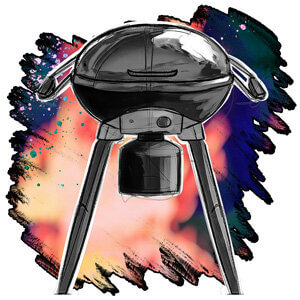
Kettle grills
Originally designed as charcoal grills, kettle grills are now also available as gas grills. They consist of a frame with a kettle-shaped housing, with the upper half of the sphere serving as a lid that can be opened and closed. Thanks to the lid, the food is protected from the wind. Such grills are equipped with several air vents that allow you to regulate the temperature and aroma. Just like the barbecue trolleys, some kettle barbecues are also equipped with wheels, which makes them particularly easy to transport. However, because they are much smaller, they take up very little space. Kettle grills are available in different designs and a wide range of colors.

Tabletop grills
If there is not much space available, small tabletop grills are a compact alternative to barbecue stations or kettle barbecues, although, here too, sufficient space is needed for a gas bottle. A portable gas grill can easily be placed on the dining table and is suitable for balconies as well as for barbecuing on the go, for example for picnics or camping. They can be taken pretty much anywhere, be it on a short trip or on holiday. Some camping gas barbecues also serve as storage cases, so that the grill including accessories can be transported. However, their grilling surface is smaller and sometimes doesn’t offer enough space for several steaks, sausages, or vegetable skewers at the same time. Anyone who wants to feed a lot of guests should bear this in mind.
Lava or infrared? The right technology
Depending on personal preferences, a lava stone gas grill that brings the classic charcoal aroma or a particularly fast and hot infrared grill may be suitable:

Lava and ceramic stone barbecues
With this particularly gentle type of grilling, the ceramic or vulcanite stones lie directly under the grill grate, store the heat and transfer it evenly to the food. As they retain the heat for a very long time, it is also possible to grill food for latecomers. When the juice or fat from the food drips onto the hot stones, the classic grill aroma best-known from charcoal grills is created. However, as the dripping fat accumulates over time, the stones must be cleaned and occasionally exchanged.
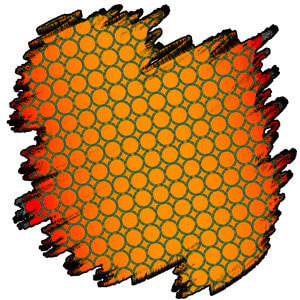
Infrared zone grills
Gas grills with infrared zones work with radiant heat in the form of electromagnetic energy that cooks vegetables, fish, and meat from above. The grilled food therefore doesn’t come into contact with the actual heat source, which means there is no danger of it sticking. Infrared grills have a similar effect on the meat as charcoal, but they reach the required temperature in a very short time. Since they also produce very high temperatures, they are especially popular with steak lovers who want to grill the meat for a short time on a high temperature.
The most important purchase criteria
Since buying a gas barbecue is a major investment, it is important to consider some purchasing criteria beforehand. From external features such as the shape, size, and material to the power and number of burners.
Size, shape, and weight
Rectangular gas grills are the most common, as their larger grilling surfaces and side shelves offer more space than round models. There are usually at least two gas burners under the grill surface, so that several dishes can be prepared at the same time. Round kettle grills are less common.
The choice of size depends above all on the floor space available to the barbecue operators and the usual number of people at the barbecues. The common working height of gas barbecues is 31.5 to 35.5 inches (80 and 90cm). Models with several burners and further equipment are usually somewhat larger. If you want to take your gas barbecue with you on trips, you should opt for a more compact model.
For moving the gas barbecue, wheels are indispensable from a certain size or weight. At around 77 pounds (35kg), the gas barbecue should have at least two wheels. Starting 110 pounds (50kg) four wheels are required, so that the barbecue can be moved by one person. Lighter gas barbecues weigh between 77 and 110 pounds (35 and 50kg) and heavier ones between 110 and 132 pounds (50 and 60kg). Some well-equipped models weigh up to 220 pounds (100kg). Smaller table-top models, on the other hand, sometimes only weigh between 4.5 and 6.5 pounds (2 and 3kg). The weight of the gas cylinder should not be forgotten either: they weigh an average of 48.5 pounds (22kg).
The grilling surface
The grilling surface is the surface of the grid. To prevent smaller food from falling through, the individual bars should not be too far apart. Depending on grilling habits, a different size is suitable: if the grate is too small, users cannot prepare enough food at the same time. If it is too large, they will waste too much energy. The ideal size depends on the number of people. The more people you cook for the more space you will need. The appropriate size also depends on your preferred food. Steaks, for example, take up more space than sausages.
A grilling area of 35 to 177 square inches (90 to 480cm²) per person is advised. The following sizes are recommended for different numbers of people:
- 2 to 3 people: 55 to 150 square inches (360 to 960cm²) for fish and meat or 31 to 124 square inches (200 to 800cm²) for sausages and skewers.
- 4 to 6 people: 111 to 450 square inches (720 to 2900cm²) for fish and meat or 62 to 372 square inches (400 to 2400cm²)for sausages and skewers.
- 7 to 10 people: 217 to 744 square inches (1400 to 4800cm²) for fish and meat or 124 to 620 square inches (800 to 4000cm²) for sausages.
Anyone who regularly grills for large groups of at least 25 people needs a grilling surface of about 1860 square inches (12,000cm²). Large grilling areas are usually divided into several grates so that users can also heat smaller areas when they are not catering for large groups.
The material
When choosing the right gas barbecue, the material also plays an important role, as it not only influences its appearance, but also its durability.
The housing
Different materials are used for the body of a gas barbecue, which should be robust, durable, and weather-resistant, as the barbecue is usually kept outside. Lower-priced gas barbecues often use steel or sheet metal with powder coating to protect against rust, while manufacturers in the higher price segment use stainless steel. The following materials are most commonly used for the housing:
- Aluminum: the UV and corrosion-resistant material is comparatively lightweight. Although aluminium looks very high-quality on the outside, it is susceptible to scratches.
- Stainless steel: thanks to its robust, durable, and heat and weather-resistant properties, stainless steel is particularly popular. Since dirt and bacteria cannot take hold, it is easy to clean and hygienic. The price-intensive material offers maximum rust protection, but is also significantly heavier than other materials.
- Ceramic: ceramic grills retain their shape even at very high temperatures and store heat for a particularly long time. However, the material also takes quite a long time to heat up and is rather heavy.
- Steel: steel is not only very heavy, but also strong and thus not very susceptible to damage. However, the material is sensitive to rust and weathering, which is why it requires a coating.
- Chrome: as a coating, it protects against damage caused by rust. However, to prevent the coating from flaking off, the barbecue needs careful maintenance. Chrome is cheaper than stainless steel but can trigger a nickel allergy.
- Enamel: metal models are often coated with a layer of enamel, which makes them insensitive to rust. The smooth surface of the ceramic compound simplifies cleaning and has a bacteria-repellent effect, but it is not break-proof.
The grill grate
The quality of the grill grate has an impact on heat distribution and cleaning. The most common materials are stainless steel, cast iron, and chrome or enamel. To ensure that the grill grate can withstand the high temperatures, the material must be of particularly high quality. The (stainless) steel grate is particularly easy to clean. Ambitious professional barbecuers, on the other hand, are better off with a grate made of cast iron.

Cast iron
Cast-iron grill grates absorb heat quickly and store it for a long time. The thick grill bars also transfer the heat easily to the food, which means it cooks faster. The inexpensive cast iron is robust and long-lasting but sensitive to strong temperature fluctuations. To avoid it rusting or becoming brittle, it requires extensive care.
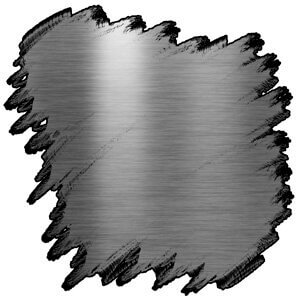
Stainless steel
High-quality grates made of stainless steel are mainly found on premium grills and are almost indestructible. They are rustproof, impact-resistant, easy to clean, and therefore particularly durable. In addition, they can withstand even the greatest temperature fluctuations without cracking. Although they need more time to warm up, they maintain the temperature for a very long time.

Chrome or enamel coating
Metal grates with a chrome coating are inexpensive but quickly become brittle with frequent use, making the material susceptible to rust. Enamelled cast iron grates also prevent rust from accumulating on the grill and make cleaning easier. However, the coating is fragile.
Power and number of burners
The performance of the burners is important for an optimal grilling result. Specified in kilowatts (kW), it provides information about how much gas is burned per hour (by all burners). If the output is given in kilowatt hours, the value refers to the amount of energy that is converted into heat in one hour. Gas barbecues with a high output therefore get hotter and heat up faster. The more efficient the gas grill, the more optimal the use of fuel. As the size of the model increases, so does its gas consumption. While small gas barbecues have between 3 and 6 kW, larger models with at least four burners have 15 to 24 kW. If you barbecue only rarely, you can opt for a weaker gas barbecue with two to four kW. Professional cooks, on the other hand, should opt for a model with at least 17 kW. The average is around 10 kW.
Power doesn’t only affact grilling time but also the amount of food that can be prepared at once. The most important thing is that the grill surface can be heated evenly to ensure even cooking. Ideally, the gas supply should be steplessly adjustable for the exact desired temperature. It should also be possible to control the burners independently of each other. This allows you to distribute the heat evenly over the entire surface of the grill or to roast different grilled foods simultaneously at the appropriate heat. While steaks, for example, can tolerate a lot of heat, more sensitive foods such as vegetables require a gentler heat supply. The number of burners alone is no guarantee for high temperatures, as a few powerful burners generate more heat than several less powerful ones. Ultimately, the temperature that can actually be achieved also depends on the construction and insulation of the gas barbecue.
High-quality gas barbecues usually have several burners. The main burner, the heart of the gas barbecue, sits directly under the grill surface. On average, a total of two to four burners are installed. The larger the gas barbecue, the more burners it should have. Most of the burners are made of stainless steel or cast iron.
Electric vs piezo ignition
In ignition technology, a distinction is made between electric and piezo ignition. For the former, the spark is generated via a power supply, usually a small battery. Gas barbecues with piezo ignition, on the other hand, are started simply and safely at the touch of a button.
For fine dining – the extras
Some gas barbecues have additional features that expand the range of functions and simplify use. With a little optional extra equipment, the gas barbecue can be used multifunctionally.
Side burner: this additional cooking area is located outside the actual grill. It serves to heat food and is worthwhile for anyone who wants to prepare side dishes or sauces on the grill in parallel to the meat. Comparable to a small kitchenette for outdoor use, the side burner allows you to create complete menus.
Rotating spit: dishes such as shashlik, tacos al pastor, rotisserie chicken, and kebabs are better off on a rotating spit than on the grill surface. This heats the meat evenly on all sides, while the juices from the roast ensure a tasty crust. Usually rotated by an electric motor, the spit requires a power supply via rechargeable batteries or a connection to the mains.
Backburner: a backburner is placed on the back wall of the grill and simplifies the grilling of skewers, such as chicken or spit roasts. This additional heat source keeps the skewers crispy and juicy for a long time.
Hotplate: the grill plate works similarly to a griddle. It is made of cast iron and is particularly suitable for steaks and smaller grilled food, such as vegetable slices.
Flavorizer bars: the metal bars on the burners are filled with a liquid such as whisky or beer, which evaporates during grilling and releases the aroma onto the food.
In addition, equipment such as cast iron grill plates, pans, Dutch ovens, pizza stones, and vegetable baskets can be used, making the gas barbecue an all-round talent. However, the following accessories should not be missing from a basic setup:
- Spatula, tongs, and fork
- Barbecue gloves
- Apron
- Cleaning brush
- Weather protection cover
- Thermometer
A utensils holder, i.e. a hook located on the side of the barbecue, is also practical for hanging up utensils, aprons and the like.
Tips for the safe use of gas barbecues
Barbecuing means open fire and intense heat, which is why a barbecue is a potential source of danger that should never be underestimated. Special attention must be paid to a gas barbecue, as it uses a highly flammable, pressurized gas. Proper and responsible handling is essential. The gas cylinder, connections and hose must be tight and function properly. You can detect leaks by brushing the hoses with soapy water, for example. Small bubbles form in the affected areas as soon as the gas cylinder is opened. In this case, replacement by a specialist is necessary. You should also always open the lid of the gas barbecue before turning on the gas bottle, as a dangerous concentration of gas may have built up underneath. If something on the barbecue catches fire, it is important to close the gas container first before putting it out to cut off the gas supply.
In the US, gas cylinders are regulated by the United States Department of Transportation (DOT), while in the UK, the European transport regulations (ADR) are implemented by the Department for Transport (DfT), which means that they must be approved and regularly inspected. Cylinders should be stored in a ventilated, shaded room protected from heat and frost. This could be the balcony, but never the basement, so that no dangerous gas concentration forms in the event of leaks — this could mean an explosion. Furthermore, gas cylinders should always be placed on a stable surface so as to not topple over.
Dirt particles can affect the function of the pressure regulator, which reduces the pressure of the gas. This can also cause a flash fire. If you want to be on the safe side, look for gas barbecues with a double pressure regulator. Another weak point are the gas hoses, which can develop cracks due to frequent bending. To avoid this, it is advisable to use a hose breakage protection that cuts off the gas supply if necessary. Damaged parts should be replaced immediately, preferably by a professional. In addition, always check the date of manufacture of the hoses. They shouldn’t be more than ten years old and, ideally, not more than five.
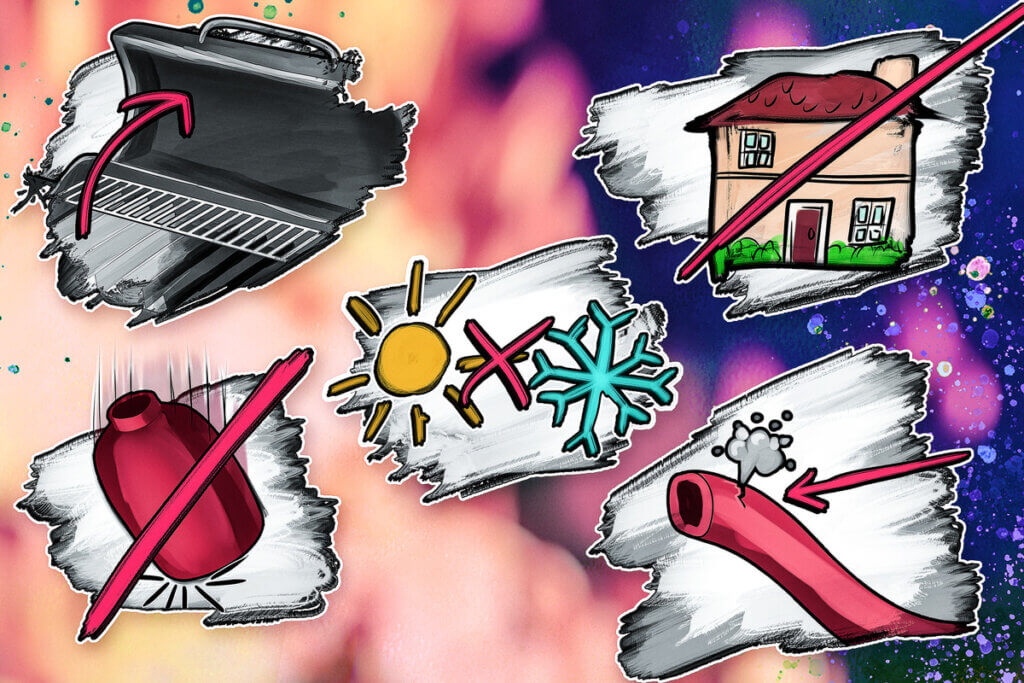
Cleaning the gas barbecue
Since no charcoal is used, gas barbecues are particularly easy to handle and clean. Not only is there no need to dispose of the charcoal, but there is also no smoke formation. After the grilling process, i.e. as soon as the grill has cooled down completely, you can clean the grate with a soft sponge and some dish liquid to remove food residues and grease. If the dirt is more stubborn, wrap the grate in damp newspaper overnight. This makes it easy to remove residues the next day. Another option is to briefly turn the grill on full power again with the lid closed and burn off the dirt on the grate. The dry residue can then be brushed off with a brass brush and rinsed.
You should also clean the cover and the drip tray. The housing of the grill can be washed with water. No chemical substances or scratching sponges should be used for cleaning, as they can damage the material. As a general rule, cleaning only becomes time-consuming if the barbecue has not been cared for over a long period of time. A thorough cleaning of the gas barbecue is recommended before and after the main barbecue season or every two to four weeks if used regularly.
Images 1-10: © FinalCheck

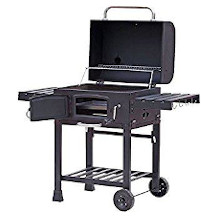
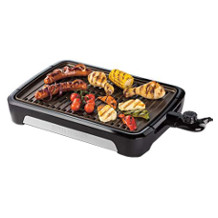
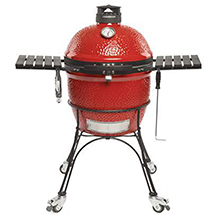
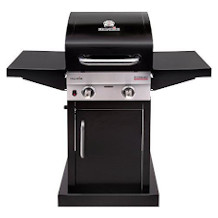
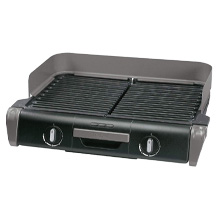
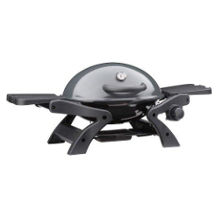
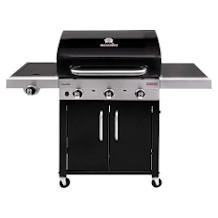
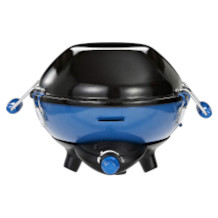











 3,577 reviews
3,577 reviews



